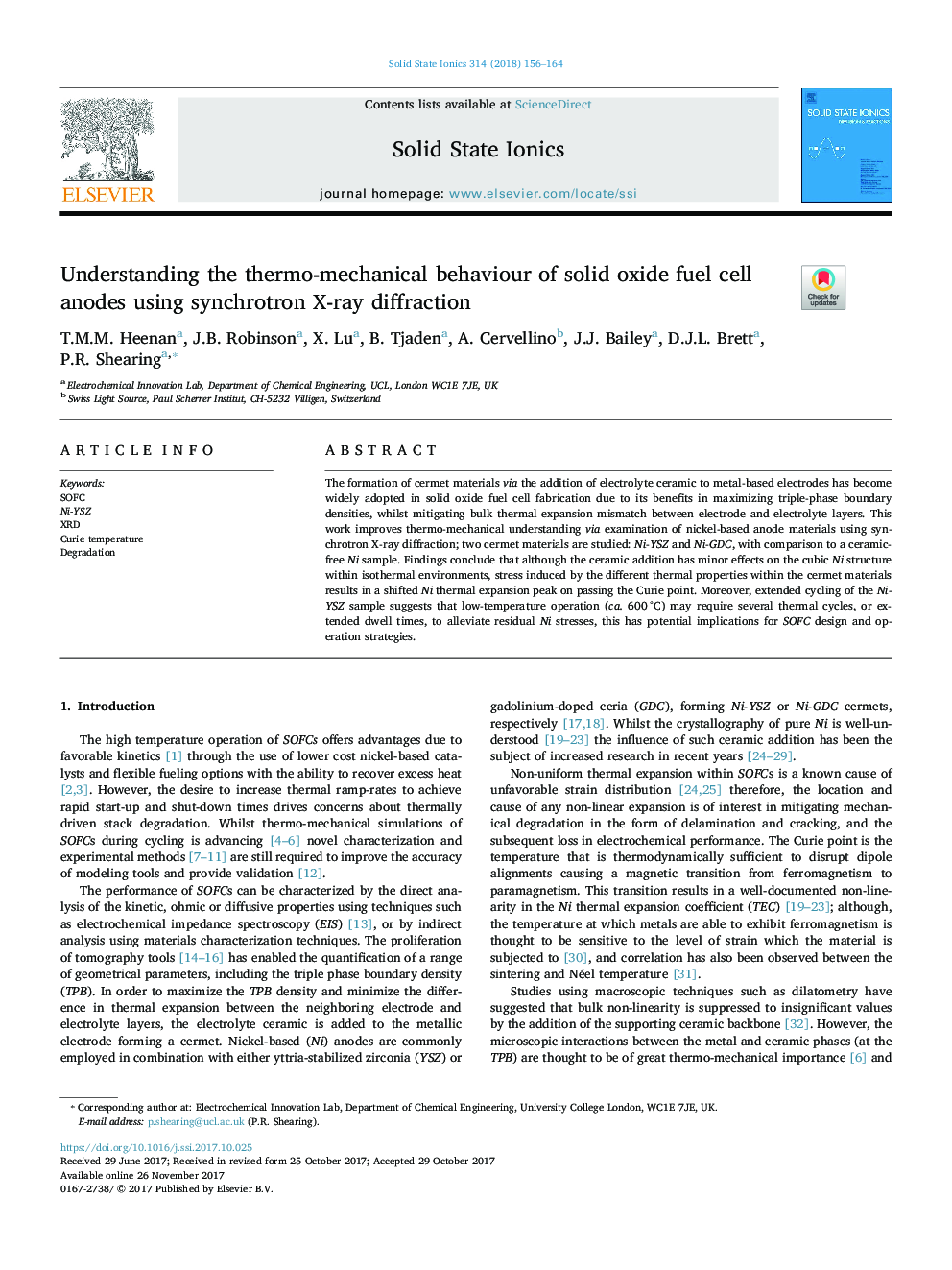| Article ID | Journal | Published Year | Pages | File Type |
|---|---|---|---|---|
| 7744740 | Solid State Ionics | 2018 | 9 Pages |
Abstract
The formation of cermet materials via the addition of electrolyte ceramic to metal-based electrodes has become widely adopted in solid oxide fuel cell fabrication due to its benefits in maximizing triple-phase boundary densities, whilst mitigating bulk thermal expansion mismatch between electrode and electrolyte layers. This work improves thermo-mechanical understanding via examination of nickel-based anode materials using synchrotron X-ray diffraction; two cermet materials are studied: Ni-YSZ and Ni-GDC, with comparison to a ceramic-free Ni sample. Findings conclude that although the ceramic addition has minor effects on the cubic Ni structure within isothermal environments, stress induced by the different thermal properties within the cermet materials results in a shifted Ni thermal expansion peak on passing the Curie point. Moreover, extended cycling of the Ni-YSZ sample suggests that low-temperature operation (ca. 600 °C) may require several thermal cycles, or extended dwell times, to alleviate residual Ni stresses, this has potential implications for SOFC design and operation strategies.
Related Topics
Physical Sciences and Engineering
Chemistry
Electrochemistry
Authors
T.M.M. Heenan, J.B. Robinson, X. Lu, B. Tjaden, A. Cervellino, J.J. Bailey, D.J.L. Brett, P.R. Shearing,
